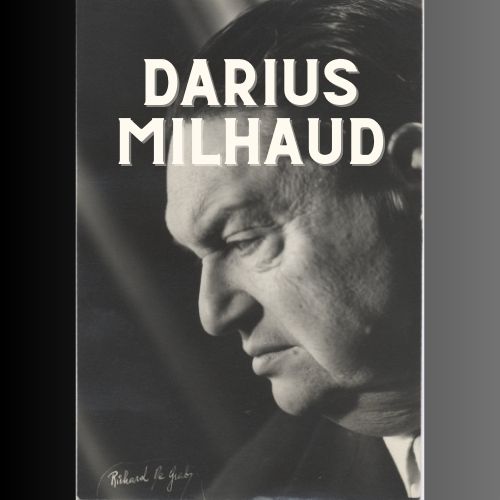
Biography written by Hervé Roten
Jules Franck was born in the French town of Nancy in 1858. A few years later, his family settled in Paris (1). In January 1873, Jules Franck sang with his brothers Gustave and Isaac in the choir of Notre Dame de Nazareth’s synagogue, led by Samuel David. In 1874, he copied several synagogue manuscripts for the purposes of preparing the sheet music collection of the Temple of rue de la Victoire. In June 1889, he married the pianist Clémence Braun, who was the sister of Hélène Zadoc-Kahn, daughter-in-law of the chief rabbi of France.
On his marriage certificate, he is mentioned as the “harpist in the Opera of Paris”. In 1890, with a recommendation by Samuel David, who was then director of the music of the consistorial synagogues, Jules Franck became director of the temple’s choir on rue Notre Dame de Nazareth.
When Samuel David died on October 3, 1895, Jules Franck was appointed director of the music in the consistorial temples and choirmaster of the temple of la Victoire. He was only 37 years old and was responsible of the work staffs of la Victoire (the service leaders Adolphe Beer and Salomon Heymann, the organist Alphonse de Villers, 8 choir singers and 28 choir boys), of Notre Dame de Nazareth (the service leaders Nethaniel Durlacher and Alphonse Théodore, the choirmaster Stern, the organist Pilard, 6 choir singers and 12 to 18 choir boys) and the staff of les Tournelles (the service leader Adolphe Gradwohl, his substitute Isidore Bernstein, the choirmaster Camille Erlanger, the organist Bachelet, 4 choir singers and 12 to 18 choir boys).
In the years following his nomination, Jules Franck’s dedication to his work was fully recognized by the consistory of Paris which gave him increasingly important responsibilities. In 1908, a new regulation of the musical personnel reinforces a little more its authority, under the control of the Consistory.
During the First World War, Jules Franck continued to direct the choir of the La Victoire synagogue. On November 6, 1919, he asked if he could bring in women to his musical staff, replacing children, who were harder to find and recruit. This decision was accepted by the Consistory on November 11, 1919.
The introduction of mixed choirs encouraged several choirmasters to make new arrangements for prayers, sometimes in a questionable style. This is why, with the help of the Consistory, Jules Franck published between 1920 and 1933 a service leader guide, that features recitatives and chants for the services with noted choirs and composed after traditional melodies, with the aim of fighting “a bloom of defective or shocking interpretations, especially concerning the services with choir”. (2)
Jules Franck retired in 1937, after 42 years of dedicated work. He died in Paris in 1941. One of his children was the composer and pedagogue Maurice Franck (1897-1983), award winner of the National Superior Musical Conservatory of Paris, laureate of the first Second Grand Prize of Rome (1926) and harmony teacher in the Conservatory of Paris from 1937 on.
(1) Probably after the war of 1870 and the attachment of the Alsace-Lorraine region to Germany.
(2) Jules Franck, Forward to the Guide of the Service Leader, recitative and chants of the services with noted choir composed after traditional melodies, Paris: the Consistory, [nd]



